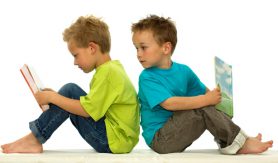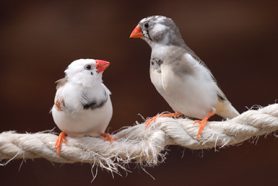News
Language and the developing brain
Thirty young Utrecht-based researchers have been awarded an NWO Veni grant, with which they can carry out their own research projects for a period of three years. Among them are Dr Ao Chen and Dr Sita ter Haar, who both focus their research on speech and language development. Most children experience no difficulties, while others struggle with learning disabilities like dyslexia. Why?
What happens in the dyslexic brain?
 Dr Ao Chen studies how children learn phonemes and words. Phonemes…? Chen: ‘They are the smallest sound units that distinguish word meaning. Like the ‘e’ and ‘a’ in the words pen and pan, but it can also be a consonant.’ Dyslexic children have persistent difficulties breaking down words into phonemes. They have trouble linking sounds to letters, which leads to reading problems. The interaction between the learning processes for words and phonemes has not yet been investigated, and is part of Chens project.
Dr Ao Chen studies how children learn phonemes and words. Phonemes…? Chen: ‘They are the smallest sound units that distinguish word meaning. Like the ‘e’ and ‘a’ in the words pen and pan, but it can also be a consonant.’ Dyslexic children have persistent difficulties breaking down words into phonemes. They have trouble linking sounds to letters, which leads to reading problems. The interaction between the learning processes for words and phonemes has not yet been investigated, and is part of Chens project.
In the Babylab in Utrecht she measures how the brains of 20 month old babies respond to phonemes and words. Some children have a genetic predisposition to dyslexia, the others do not: ‘We want to see if there’s a difference between the two groups: what are the early signs of dyslexia, and how can we identify them?’
Among others, Chen works with Dr Hugo Schnack, Assistant Professor at the Brain Center Rudolf Magnus of the University Medical Center Utrecht: ‘Hugo’s research method involves machine learning. Software analyses and compares our research data and recognises patterns. Hopefully this will help us predict which children are dyslexic.’
‘Our goal is to develop an early diagnosis tool to identify the problem before children start reading and writing. Eventually we may be able to develop tools that will help children with dyslexia at an early stage. But we need to explore that further with other research projects in the future.’
How birds of a feather sing together

Why are some birds better singers than others? That is Dr Sita ter Haar’s main question: ‘Songbirds learn to communicate through sound in much the same way as people: by imitating their parents. Zebra finches learn songs from their father, similar to how human children learn to talk.’
In her study with zebra finches, Ter Haar focuses on three factors that influence how they learn: sleep, natural predisposition and experience, and the relationship between the cerebral hemispheres. ‘There is a link between these factors and how zebra finches learn to sing, but we don’t know in what way they are connected.’
She studies the birds’ behaviour while they learn under controlled conditions. For example, they listen to an audio file instead of to their father. This helps Ter Haar to minutely document the learning process: ‘Some birds reproduce everything they hear, others almost nothing.’ The same goes for babies: ‘Whether you grew up on a farm or in a highly educated family, most children have no trouble learning their native language. However, some experience problems. The question is why. ’
Ter Haar aims to translate her songbird research to human speech development by performing similar studies on babies. Her goal? Gaining insight in what causes developmental problems, in order to help children at an early stage: ‘If a child is a late talker, it doesn’t always indicate a language problem. Other possible causes like autism have to be ruled out first. That’s why speech and language impairments are often not diagnosed until children are in school, and are already falling behind.’
